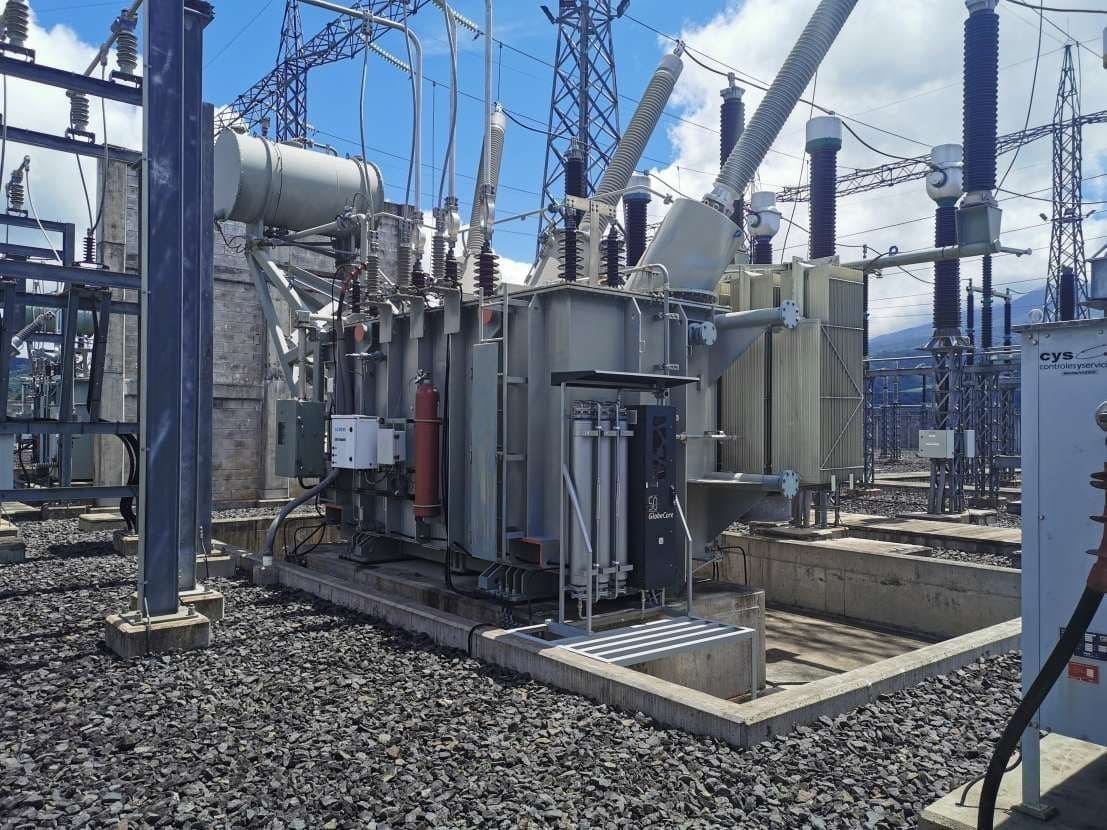Power transformer monitoring is a crucial practice aimed at guaranteeing their dependable and effective functioning. Power transformers serve as essential elements within the electrical power network, tasked with conveying and dispersing electrical power from generation facilities to end-users. A malfunction or breakdown in a power transformer may lead to electricity disruptions, system inactivity, and considerable financial setbacks. Consequently, power transformer monitoring is imperative to avert such occurrences and uphold a consistent and trustworthy electric power provision.
What is Power Transformer Monitoring and Why is it Performed?
Power transformer monitoring involves gathering and assessing data associated with the functioning and status of power transformers. This comprises tracking multiple factors, such as temperature, oil volume, winding currents, and voltage, among others. Power transformer monitoring is crucial in sustaining the dependability and security of these transformers, which are key elements of the electric power grid. Alongside the factors previously mentioned, power transformer monitoring may also encompass monitoring insulation conditions, partial discharge events, and moisture levels, among others. Such factors offer invaluable information regarding the transformer’s well-being and operation, enabling proactive upkeep and restorations before significant problems emerge.
A primary advantage of monitoring is the capacity to identify and evaluate faults at an early stage, thus preventing disastrous failures and substantial financial damages. An additional benefit of power transformer monitoring is the potential to optimize the transformer’s performance and prolong its service life. By observing the transformer’s parameters, it becomes feasible to pinpoint areas for enhancement, such as lowering the operating temperature or fine-tuning the oil level. These optimizations can result in decreased wear on the transformer and heightened efficiency, leading to cost reductions and bolstered dependability.
Ways of Monitoring Power Transformers
There exist two principal methods for power transformer monitoring: offline transformer monitoring system and online transformer monitoring system. Offline transformer monitoring system usually entail acquiring physical measurements, such as insulation resistance, winding resistance, and turns ratio, in addition to carrying out visual examinations of the transformer’s components. These assessments and inspections yield valuable information about the transformer’s state, but they are confined to the specific timeframe when tests are executed. Moreover, these techniques can be lengthy and necessitate taking the transformer offline, leading to power supply disruptions.
Conversely, online transformer monitoring system perpetually gather data on the transformer’s status and functionality, enabling real-time supervision and evaluation. These system generally employ sensors and observation devices to gauge various parameters, including temperature, oil volume, winding currents, and voltage, among others. The obtained data is subsequently scrutinized using advanced algorithms to identify any atypical behavior or deviations from standard operating conditions.
Online transformer monitoring system present multiple benefits compared to offline transformer monitoring system. For instance, online monitoring system can pinpoint issues at an early stage before they result in substantial failures or power supply interruptions. Furthermore, online monitoring system can offer a more precise evaluation of the transformer’s condition, as they collect real-time data during operation, permitting a more exhaustive and dependable analysis.
TOR-5 GlobeCore Power Transformer Monitoring System
The GlobeCore TOR-5 is an online transformer monitoring system engineered to deliver real-time observation and diagnostics for power transformers. The system is linked to the transformer and is persistently in close proximity to it. Upon connection, a sealed circulation circuit is established: oil flows in from the lower section of the transformer tank, traverses the TOR-5 system’s sensors, and returns to the upper portion. The sensors measure the transformer oil’s parameters once per minute and transmit this data to a cloud server, where, according to the GlobeCore method, additional parameters are calculated to more effectively evaluate the transformer’s condition.
Crucial parameters provided by the TOR-5 system include:
- Water concentration in the oil in the upper and lower sections of the transformer;
- Water concentration in solid insulation in the upper and lower sections of the transformer;
- Dielectric strength of the oil;
- Oil quality index.
The oil quality index serves as a comprehensive indicator for assessing the oil’s overall condition. It correlates well with the acid number, making it suitable for appraising the oil’s aging degree.
Advantages of the Online Power Transformer Monitoring System TOR-5
The TOR-5 online transformer monitoring system presents several benefits over conventional offline monitoring approaches:
- Multifunctionality. The system accomplishes three objectives: determining crucial transformer parameters online, filtering and drying insulating oil, and promptly informing the user about the system’s and transformer’s performance.
- Versatility. The TOR-5 system is suitable for servicing oil-filled transformers of varying ages and purposes.
- Compactness. The system comprises the minimal number of components necessary for efficient operation, all housed within a single enclosure.
- Longevity. The system’s service life is on par with the transformer’s, due to the reliable protection of all components from damage and weather exposure.
- User-friendly web application. The web page displays a list of substations and transformers for each substation. The program also features transformer mapping and presents measurements and calculations as graphs and diagrams. By selecting an object, comprehensive oil condition information is available for the entire period since the TOR-5 system’s installation near the transformer or for a chosen time frame.
- Simple connection. After the prior stage, the system is connected to the transformer within minutes.
- Oil processing occurs automatically without disconnecting the transformer.
- Remote control. Electric power company managers or service department employees can access the system from any workplace and obtain information about the transformer park’s status, without waiting for lab results or visiting the equipment’s location.
- Comprehensive information and assessment of transformer state dynamics. Continuous data collection enables evaluation of the dynamics of transformer oil state changes, making the TOR-5 system more informative compared to periodic laboratory analyses.
In summary, power transformer monitoring is an essential procedure that significantly contributes to guaranteeing the dependable and effective functioning of these transformers. The TOR-5 GlobeCore Power transformer monitoring is a modern online monitoring solution. Boasting a multitude of benefits, the TOR-5 system is an outstanding investment for any organization aiming to enhance the reliability and performance of their power transformers.


